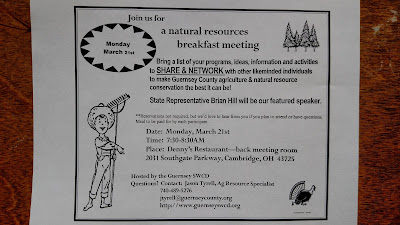A program launched Monday has its sights set on encouraging the development of more grocery stores and other retail outlets selling fresh food in underserved rural and urban areas.
Finance Fund Capital Corporation, or FCAP, announced the start of the Healthy Food for Ohio program, a public-private partnership that has raised about $10 million - including $2 million from the state - for grants and loans to put grocers in so-called food deserts.
The funding is designed to incentivize the construction of grocery stores by offering financing for costs like land acquisition, construction and equipment that might otherwise be too expensive for a company to consider entering an underserved market.
"Ohio's taken a really great step toward improving the overall health and well-being of its residents, as access to healthy food goes hand-in-hand with neighborhood and economic revitalization," Caroline Harries, associate director of The Food Trust, which will work with FCAP to review applications, said at a Columbus news conference.
The program came out of recommendations made last year by the Ohio Healthy Food Financing Task Force. That group called for lawmakers to create a program to incentivize development of fresh food retailers in underserved areas.
In last year's biennial budget (HB 64), lawmakers included funding for the Department of Job and Family Services to administer the program.
FCAP Director of Development Valerie Heiby said the fund currently has about $10 million, including the $2 million from the state and about as much from the federal government. The rest is from private fundraising, and they aren't done with that yet.
"HFFO will help overcome funding gaps and barriers faced by grocers and other healthy food retailers operating in underserved areas," FCAP President and CEO Diana Turoff said.
The program would be open to all kinds of grocers, from big chain stores to independent mom-and-pop stores to farmers markets.
Lawmakers said the program is one more way to encourage private companies to move into areas where they're needed, but where they might not otherwise go.
"There's been a federal program to finance healthy foods for a number of years and in many places," U.S. Rep. Steve Stivers (R-Columbus) said. "It's just not enough to close the gap."
Rep. Ryan Smith (R-Bidwell), the House Finance Committee chairman who sponsored the state budget bill, said it will help rural areas like his district. Vinton County, a rural county in southeast Ohio and one of the state's least populous, hasn't had a grocery store since 2013, he said.
"When I tell people in Columbus that we don't have a grocery store in the entire county, they look at me like I have three heads," Rep. Smith said.
This program might reduce the risk a company would face in building a grocery store there, he said, which would save residents a trip of dozens of miles just to buy fresh food.
"I would hope that private business would fill that void, but after two, almost three years, it hasn't," he said.
Kristin Mullins, president and CEO of the Ohio Grocers Association, said grocery stores operate on very small margins, and anything that can help defray the upfront costs of building a store will help a store stay in an area. Stores at risk of closure can also apply for help through the program.
"No grocer ever wants to close," she said. "Anything that can be done to help that is much appreciated."
Grocery stores are important because they can help residents improve their diets, said Rosemary Riley, an exercise physiologist and dietitian. People who live in lower-income areas without access to grocery stores are more likely to suffer from diet-related health conditions, she said. Diet even plays a bigger role in problems like obesity than exercise, she said.
"I believe lack of access to healthy food is a collective responsibility for all of us," she said. "Everyone deserves the chance to have a healthy diet."

















